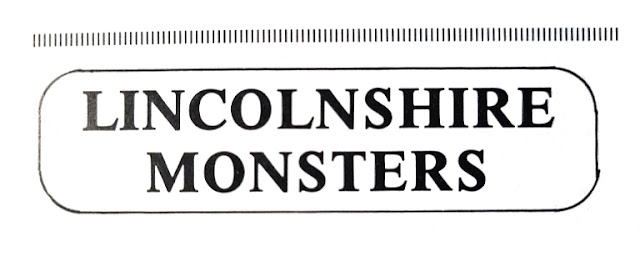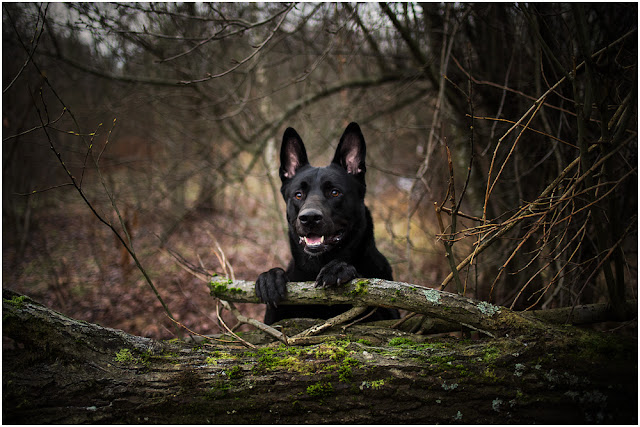Sea Serpents
While doing some research on a completely unrelated topic, I stumbled across a snippet in a back issue of Lincolnshire Life magazine, dating from July, 1983. There is a short article titled “Lincolnshire Monsters” which caught my eye. I post the relevant piece in full below.
 |
| Header from the 'Lincolnshire Monsters' article in Lincolnshire Life magazine, July 1983 [1] |
In the early 1960s a group of people visiting Gibraltar Point, from Wainfleet, reported seeing a strange animal about ten feet in length. It was gliding in the water at a fast rate towards Skegness. Several theories were advanced to explain the sighting, but perhaps the solution to the mystery can be found in White's 1882 Lincolnshire Directory in which it explains that off the Skegness coast ' In fine, calm weather, that optical illusion called the mirage is sometimes seen here to perfection. On such occasions the ocean wears the appearance of a sheet of glass- not a ripple is to be seen on its surface and the horizon appears to be bounded by a high, dark wall. upon which is seen, loomed up as in the very clouds, and magnified to a high degree, the vessels, birds and every other object upon the water This phenomenon is called a sod bank by the fishermen and is considered a portent of strong easterly winds.
Perhaps the Skegness monster was only a mirage, but a columnist in the Grimsby Daily Telegraph in 1931 wanted something more tangible. Personally, I think it's time Cleethorpes obtained a sea-serpent'. He wanted a sea monster with a long neck draped plentifully with seaweed, and a matching scaly head. 'There would be a fortune in a sea-serpent', he wrote. Provided a really tame serpent could be obtained, a special charge could be made to be allowed to feed it from the end of the pier". Not content with a monster, the columnist speculated that the advertising agents could design an appealing poster with the slogan: `Come to Cleethorpes and see the sea serpent.
I suspect that back when he wrote those words in 31, the Grimsby Daily Telegraph columnist couldn't have foreseen that his wishes for a tourist-drawing sea serpent would be fulfilled in just three short years! In 1934, inshore fishermen hailing from Cleethorpes had been experiencing inexplicable losses from their lines, so often far in excess of predation by normal marine life that they had begun to suspect human poachers, helping themselves to the fruits of their labour. So two fishermen, called Kirman and Reeder, decided to keep a night time vigil to see if they could confront the culprits.
Early in the morning of February 2, 1934, Kirman, who had been standing up in the boat watching and waiting, gave a yell and fell back on Reeder.
“Struck speechless, he could only point at the water.”
Climbing to their feet in the rocking boat, the two men saw a “terrific swirl, rapidly moving away from the boat”, which vanished in the direction of Tetney Haven. Cooler heads reached for explanations such as an exceptionally large porpoise for example. Two days later, on February 4, 1934, William Croft, of Rowston Street, Cleethorpes, who spent 51 of his 60 years fishing off the Humber, witnessed a creature at sea. He told the Grimsby Telegraph:
“You can take it from me, it’s no porpoise. It had a big head, like a Great Dane, ears and a mane on its neck. There was about two feet of head and neck out of the water.”
Local press was inundated with letters, and for weeks interest in the strange sea beasts was at fever pitch. But no answers seemed in sight.
 |
| 'Sea Monster in Hull Trawler Net' The Hull Daily Mail, dated October 28th 1938 [2] |
Then 4 years later a Hull trawler, Deepdale Wyke, caught a fantastic creature in its net. It was described as 7ft long, with a straight tail, grey skin, and an ostrich-shaped head. It was said to ‘suck its food’. It was brought to Hull and taken to the headquarters of the West Dock Steam Fishing Co, where it was put on display. An autopsy revealed the contents of its stomach to be kittiwakes and nothing more. No one, not even the seasoned fishermen, could identify it. Could this have been the mysterious creature spotted by the Cleethorpes Fishermen? News reports said that the beast was netted in Icelandic waters, so it may be entirely unrelated. Sadly its location today remains a mystery so we will likely never know. [3]
But maybe one of the most terrifying encounters with a North Lincolnshire sea serpent wasn’t even made at sea at all, and instead by a very land-based family from Hull who were taking a stroll on a path that ran along the Humberside on February 6, 1934. Thomas Atkinson, of Barnsley Street, Hull, Told the Hull Daily Mail, he had been walking with his wife and children by the riverside when they saw something black swimming in the Humber. The Atkinson family, interested by the sighting, stopped to watch the creature. But when it turned toward them and “stared back at them with eyes the size of portholes”, the family fled to safety! [4]
With a length of over 50 miles, Lincolnshire’s coastline runs down the North Sea coast of eastern England, from the estuary of the Humber (which divides it from East Yorkshire) to the marshlands of the Wash, where it meets Norfolk. With important ports at Grimsby, Boston and Immingham, the sea has provided the county with a fishing industry and a source of entertainment and tourist income. So it’s hardly surprising that occasionally the waters off our coastline have presented mysteries that seem to defy conventional marine biology and it’s likely they will continue to do so.
----------------------------



Comments
Post a Comment